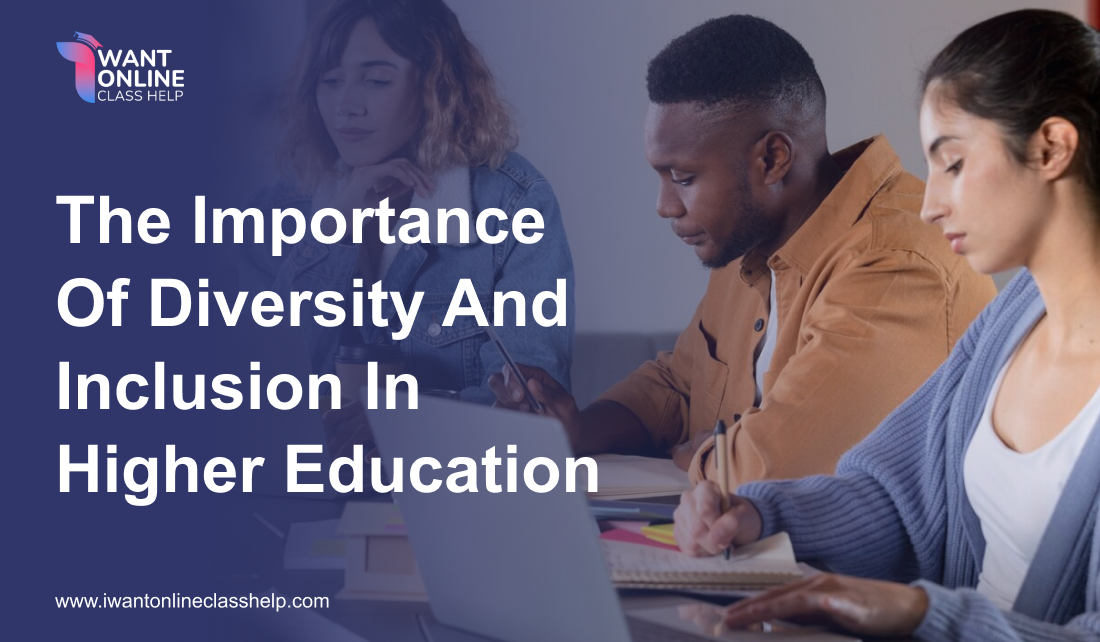
It is important that higher education systems embrace diversity inclusive in an effort to enable a more friendly and caring environment for all students, lecturers and university staff members. This is because the acceptance of different people enriches the learning process as well as equips the learners with skills needed to thrive in a globalized world. We are going to venture into various ways in which this notion of diversity and inclusion impacts academic and social outcomes on this blog. Therefore,enriching the overall educational experience by fostering diversity inclusive policies will be at the core of our discussions in subsequent paragraphs.
Why We Need Diversity And Inclusion In Higher Education
Recognizing how varied perspectives foster innovation and sharp thinking is essential in understanding the importance of diversity in any setting. Being diverse supports inventiveness, compassion, and empathy between people from different cultures. Inclusive approaches guarantee uniformity for all, leading to better learning outcomes as well as high retention rates. Institutions of higher learning can put measures in place that promote inclusion of minority groups for an inclusive college community overall. Pay Someone To Take My Online Class can contribute significantly to promoting diversity and supporting feeble initiatives for inclusivity in higher education. Let’s take a deeper look at how promoting an inclusive campus impacts on everyone’s lives.
The Merits Of A Campus That Is Diverse And Inclusive
1. Students are exposed to many different perspectives and ideas, thus improving the overall learning experience.
2. There is a sense of community and belonging between students, faculty, and staff.
3. Cultural competence is developed for those individuals who are well-versed in the globalised job market.
4. Open-mindedness, toleration as well as mutual respect should be encouraged.
5. It also makes possible collaboration and interdisciplinary research.
6. They also help in building a good reputation for the school attracting diverse applicants for studentship and hiring purposes of faculty members.
Expect some steps on how you can promote diversity and inclusion within higher education so that you can enjoy these benefits in your college or university.
Obstacles To Diversity, Equity, Or Inclusion
1. Change resistance or traditional mindsets preventing progress from being made
2. Scarce representation of underrepresented groups in leadership positions
3. Lack of sufficient support systems for diverse student populations
4. Biased decision-making influenced by implicit prejudice and discrimination
5. Complexities involved with intersectionality and multiplicity of differences among students or employees.
6. Inadequate teaching about student diversity for teachers and other workers at schools
However, it is extremely important that these issues are dealt with beforehand by institutions in order to develop a truly inclusive atmosphere on campus. Watch out for strategies of overcoming these blocks and fostering diversity and inclusivity in higher learning.
Strategies For Promoting Diversity And Inclusion In Higher Education Settings
1.Implementing inclusive policies and practices to support underrepresented groups.
2. Providing diversity training for faculty, staff, and students to increase awareness.
3. Creating mentorship and support programs for students from diverse backgrounds.
4. Increasing recruitment efforts to attract a more diverse student and faculty population.
5. Establishing diverse hiring practices to ensure representation in leadership roles.
6. Encouraging dialogue and collaboration among individuals with varying perspectives.
7. Embracing intersectionality and recognizing the unique challenges faced by marginalized groups.
By adopting these strategies, higher education institutions can move towards a more inclusive and equitable environment for all members of their community. Stay tuned for tips on implementing these strategies effectively.
Role Of Educators And Administrators In Enhancing Diversity And Inclusion In Higher Education
To make sure that an all-inclusive, hospitable climate is created and sustained in the school, these people should therefore be equipped with the right skills and resources. They need to have inclusive policies; guide marginalized groups; and form a cultural dialogue to secure diversity. If they stand up as forces of changing from within then they can act as leaders of multiculturalization in higher learning institutions. It is vital for them to know how their schools could become diverse, equitable, and inclusive, so that through their positions they may institute transformative innovation. Also online class help can enhance this effort in advocating for inclusive academe.
Conclusion: The Ongoing Commitment To Diversity And Inclusion In Higher Education
Finally, as we conclude our conversations on why it is important for colleges or universities to have diverse campuses, educators as well as administrators must ensure that there is consistent commitment towards creating an environment that embraces diversity from time immemorial. This does not mean just having programs and policies but essentially making diversity part of the institutional values; which means standing against discrimination based on ethnicity, race, or nationality. In this regard, universities should keep working towards a supportive learning environment where students, faculty members, staff members from different backgrounds could feel comfortable contributing to better living conditions





